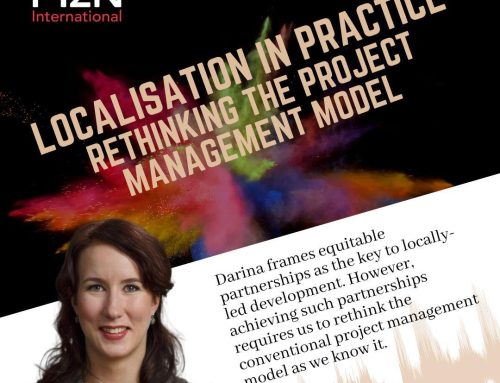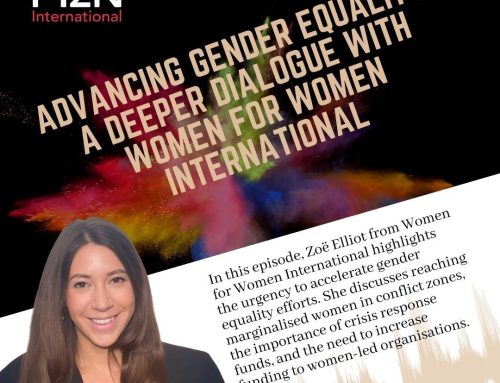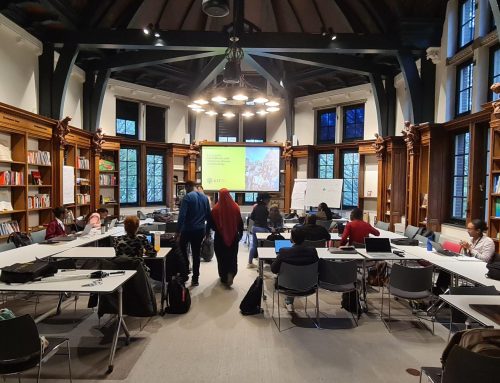Many talk about the benefits of operating as a social enterprise in the development and aid sector. A more sustainable and diversified funding base, more accountable division managers and better programmatic results are what many development and aid organisations aim for. Yet few understand what it means to operate a social enterprise model and even fewer have done it.
MzN International supported Cordaid, an internationally operating emergency relief and development organisation based in the Netherlands, in its transformation from an NGO to a social enterprise. In an interview with Cordaid’s chief operating officer, Mr Henri van Eeghen, we discussed the transformation and lessons learned during the process.
Questions and narrative by Christian Meyer zu Natrup, Director, MzN International
Answers by Henri van Eeghen, COO, Cordaid
What was the impetus to make this transformation happen?
Firstly, there’s been a lot of talk around shrinking foreign aid budget and the phasing out of funds of large partnership grants, which represented 80 per cent of Cordaid’s funding at the time. When I arrived at Cordaid in late 2009, I found an organisation that was basically an unofficial civil service organisation. The mix of finances was unhealthy.
The old grant model of northern tax moneys funding programmes in the Global South via NGOs is (rightly) being challenged.
We’ve also come to realise that the old grant model of northern tax moneys funding programmes in the Global South via NGOs is (rightly) being challenged. For NGOs, this means facing the reality of dwindling grant funding, which should be a wake up call to any NGO and a sure sign that they needed to change their mind-set and operational principles. I knew we needed to transition from a foreign aid to an international development organisation, and operating as a social enterprise was the answer.
How did the transition actually happen?
We spent the whole of 2012 restructuring Cordaid. We sought some external help and hired new programmes management with an attitude for transformation. External consultants helped create 11 business units. We also trained staff in financial management and started using programme and divisional P&Ls (profit and loss accounts) as management tools, rather than just reporting ones.
Finally, we introduced a balanced score card to look into five different domains: programmes, communication, funding (operational functions), HR and finance (support functions). Each domain has its own key performance indicators. The idea is to use these tools to inform future strategies.
All this meant that instead of focusing on our past performance with quarterly reports, we spend more effort planning ahead.
How much resistance to change did you experience when proposing such a transformation?
Before my arrival, in December 2009, Cordaid had attempted a smaller reorganisation. Unfortunately, there was change fatigue and it all amounted to some tinkering around without any real transformation. When we gave reorganisation another shot in the second half of 2011, we genuinely asked ourselves why we were doing this. Eventually, we came up with a much more defined mission and established 11 business units that we would concentrate on. All other activities were transferred into a specialist unit that would wind these programmes and activities down.
That made the change very clear. Everyone knew we meant business and resistance was lowered.
Good external help with the right capacity, reach and flexibility can sometimes be hard to find in our sector. How did you manage this?
We hired consultants in 2012, who specialised in change management and transformation but were familiar with the sector too. Knowing the sector was critical. They stayed with us for 18 months.
We worked together to hire senior staff for the strategy and funding units as well as implement the corporate communications system targeting the business world. This close cooperation was crucial for success.
What about the costs of what some would consider a radical change?
The human cost was high but crucial. More than half of the Cordaid’s mid-level and senior management has changed as a result of the transformation. The other half was promoted from within and provided with training, coaching and assistance. This was a good balance, ensuring knowledge retention while stimulating organisational change.
What difficulties were there while implementing this change?
Of course, some people in Cordaid were initially unwilling to change their minds. But the move towards open data and full transparency made a real difference, making us all feel far more accountable.
The move towards open data and full transparency made a real difference, making us all feel far more accountable.
It was hard sometimes to restrict and streamline some programme managers towards a particular way of working. Most managers preferred the freedom to do things the way they did in the past.
But it was definitely worth it: The fact that we helped the organisation to focus on fragile and conflict- affected areas made it possible for the business units to make choices in programmes, funding and communication. Our integrated approach to building flourishing communities in fragile areas was an inspiring challenge for all experts to work together. This focus on fragility appeared to be a driver of financial and programmatic innovation.
The implementing power of Cordaid shows in the way we use Results-Based Finance for healthcare, education and security programmes. But also, our investment funds, our local risk management and the cooperation with different companies all over the world breathe the entrepreneurial spirit that defines the changes we made within Cordaid.
And once our projects moved to open data, people started coming to us with questions, making managers feel more accountable. What’s more exciting, if a donor wants to know our output and social impact they can see it all on our website. For some donors, we don’t even need to send additional reports anymore, saving a lot of time and money.
Sounds great! But many NGOs acknowledge all this and still shy away from the transformation citing the financial costs as an insurmountable barrier. Is that a valid point? And what was the cost of the change?
The direct costs included hiring a change manager and a few consultants to help design a business plan. Altogether it amounted to, excluding indirect costs, EUR 300,000. In other words, less than one per cent of our turnover for one year.
Given the immediate return, I don’t think that this is too high a price to pay for future proving your organisation. And in the first year after the transition our overall annual budget grew from EUR 129 million to EUR 181 million. Considering the cuts in the budgets coming from the Dutch government, this was a considerable growth, proving that Cordaid’s people were quick learners.
What advice do you have for organisations considering this path?
It’s important to make a clear assessment of where you are as an organisation. Take some time to understand the aspects of your internal culture, the way people work with each other (or not) and how they create their own islands.
A good gap analysis clarifies a lot of questions and allows for ambitious targets. Remember that the human capital in your organisation will be your biggest asset. In Cordaid, most of our people really flourished with and actively promoted the change, experiencing it as something liberating. I see a completely different organisation now (in some cases even down to the way they dress!).
So, what’s next for Cordaid?
The transition has created many new work streams in Cordaid: Those still need to grow and consolidate themselves, but we feel blessed by the trust and support from our 320,000 Dutch private donors as well as from large international foundations.
Our integrated approach on the situation of women in fragile areas shows to be a very interesting proposition for international funders, but also for our work on lobby and advocacy, our local support for entrepreneurs and our focus on youth and employability. This all gives us the possibility to build strong multi-stakeholder coalitions.
Finally, one challenge is not to be afraid to keep our organisation on the move in this rapidly changing world. If our aim is to bring change to the most difficult places in the world, then we should also be able to keep changing ourselves.
That’s what we did in the last 100 years and that’s what Cordaid will be doing in the coming 100 years.
If you’d like to know more about how MzN can support your organisation during the change process, please contact MzN International.






